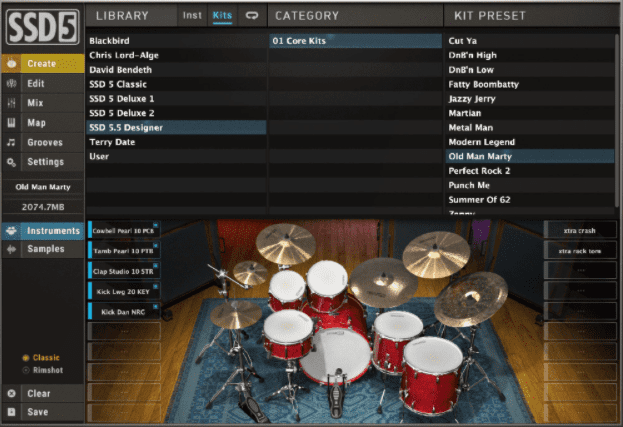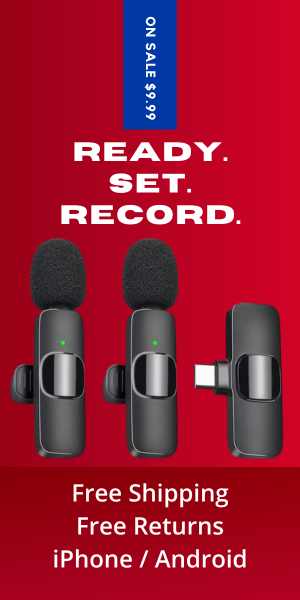Worship leaders and songwriters find themselves in an exciting time, with plenty of ways to produce music for worship experiences. The current availability of affordable, digital audio workstations and the reach of social media has created the perfect context in which to write and share your own musical projects.
No longer are quality recordings reserved for signed artists and major record labels. Today, anyone with musical talent, a reasonable budget, a good ear, and a measure of perseverance can create their own recording project. In this article I will outline three phases of this creative process: writing, recording, and promoting.
3 Phases to Expertly Produce Music For Worship In Your Home Studio
Phase 1 – WRITING
Any recording project begins with writing songs. There are a number of ways that songs are written. Some people start with a melody; others with lyrics. Sometimes, both come at the same time in a moment of inspiration. Some writers sit down at appointed times, like going to the office. Others wait for inspiration. Some collaborate with another writer/writers; others choose to write alone. There is no right or wrong way to write songs; however, there are some common elements. Songwriting is an art and a craft. Even with inspiration, writing still involves some perspiration, time honing and refining a melody or lyrics.
Helpful Tools
The tools that I have used for years include some sort of notebook to capture lyrics, a rhyming dictionary, and a simple recording device. A notebook allows you to keep your lyrics in one place. A rhyming dictionary offers a wide variety of words that may not readily come to mind otherwise. It obviously helps in finding words that rhyme; however, it can also spark the creative process, offering a fresh idea, word, or direction for a song.
A simple recording device such as a cell phone is an invaluable tool in the songwriting process. When a melodic idea comes to mind, sing it into your recording device so that you don’t lose it. Too often, I naively thought I would remember an inspired melody, only to realize I could not recall it an hour later. Capture it. Record it. You’ll be grateful that you did.
From one songwriter to another: don't assume you'll remember that amazing, inspired melody as it comes to mind. Grab your phone, open the recording app and sing it into your device. Click To TweetDuring the writing phase, be open to any source of inspiration. Stay particularly attentive during the Sunday morning message and make note of a unique phrase, verse, or idea that may “speak” to you. Linger in and meditate on a passage of Scripture; be attuned to unique phrases, lines, and words. Go outdoors. If you run, be receptive to ideas that may come from your surroundings.
Be patient during the writing phase; don’t force a song to completion. Sometimes, you may have to let it lie for a while before coming back to it. Produce music that's excellent; mediocre songs aren’t worth the time and energy it takes to record. Wait until you feel the song has truly come together, don’t rush to finish it by sacrificing the lyrics in the second verse or settling for a weak melody in the pre-chorus.
Sharing Your Unfinished Music
With that in mind, have someone safe with whom you can share your songs. The key is to choose someone that can offer some helpful and honest feedback. Ideally, you want someone who knows music and isn’t afraid of giving you some critique. If you are a worship leader in a local church, after sharing your song with a safe person, share your songs with your worship team and congregation. Note how the worship team responds to your song. Are they able to pick it up quickly? Do they “get it,” musically? Do they seem energized by it; are they into it? I always look for these initial cues and responses. If the worship team likes it and it seems to “work,” that’s a really good sign.
Sharing it with your congregation is the real payoff. Can you hear them singing it? Do they seem engaged? This is a really special moment for a songwriter. When you realize you have offered your people a way to express something to God, you experience the joy of investing in this craft. It is a true privilege to give your church words and melodies with which to praise and worship the Lord.
Spend the necessary amount of time collecting enough good songs for either an EP or a full-length project. This might take a year or more. Keep at it. Share the songs appropriately with your congregation. Don’t share a new song every week! But use the way they receive and respond to your songs as a filter for your project. When you are satisfied with the number and selection of songs, then it’s time to move on to the next phase of the process: recording.
Check out: 7 Ways MediaShout Worship Software Makes Church Tech Easier
Phase 2 – RECORDING
To produce music that will have a professional quality, plan to spend a significant amount of time in this stage of creation. The recording process involves three main phases: pre-production, tracking, and mixing.
Pre-Production
During the pre-production phase of producing music, you will work out things like tempo (BPMs), key, instrumentation, and musical arrangement. You want to have most of this already worked out before the tracking phase. Ideally, you will have a lead sheet (melody line, lyrics, and chords) and demos of all of the songs for reference.
If you introduced your songs with your worship team and congregation, you should have charts as well as an audio or video recording from the service. If you use multitracks, you may have already recorded parts that you can further refine or tweak during the tracking phase. All of this is part of the pre-production, a guide as you go into tracking the final version of your song.
Tracking
For tracking, you will need a digital audio workstation (DAW). Some of the more popular DAWs include Ableton Live, Apple Logic Pro, Apple GarageBand, and Avid Pro Tools. I have worked with Ableton Live for several years now, and I love it. It is affordable and very user-friendly. You can’t go wrong with this DAW.
![]()
You will also need an audio interface (to accommodate instruments and microphones), two monitor speakers, and a computer (Mac or PC). The Focusrite Scarlett 2i2 is a popular interface. However, if you plan on recording a drum kit, you may want to invest in something with more inputs and outputs like the Focusrite Scarlett 18i20. For studio monitors, a set of KRK Rokits is a great choice. For a computer, I would recommend a MacBook Pro or MacBook Air.
Once you have the necessary gear, you are ready to start tracking! The most conventional way is to first record a “scratch” vocal and a “scratch” acoustic guitar or piano part. They are called scratch tracks because they won’t be the final performance. They are like temporary scaffolding in construction. These tracks will be replaced later in the tracking phase. They function as a guide for the drummer.
The drummer will play to a click track and the two scratch tracks (vocal and guitar/piano). After tracking the drums, you will need to adjust for inevitable snare, kick, or tom hits that weren’t right in time. Ableton Live has a “quantize” tool that can aid in this process. After tracking drums, I usually move on to bass, then rhythm guitars (acoustic and electric), then keys (piano, pads), then lead parts (guitar, violin, etc.) After all of the instruments are tracked, I move on to vocals. You will want to get a perfect lead vocal before moving on to any background vocals (BGVs) and/or harmonies. You will want to ensure that the vocals are in pitch and in time.
After the instruments and vocals are tracked, you can finish this phase with any “sweetener” elements: shakers, tambourine, etc. These are best used as samples (Ableton has a library of samples). After the tracking phase, you are ready to move on to the mixing phase.
Design questions? The 7 Design Mistakes You Might Be Making in Your Church Graphics
Mixing
Mixing is a tedious process that requires a fair amount of perseverance, attention to detail, patience, and good ears. One trick I learned in mixing is getting a great drum sound. A friend shared a great tool to get a big drum sound: Steven Slate Drums. This will replace the original drum sound with a library of great samples that will give you a more professional sounding drum kit. The software I used was Trigger 2. It was well worth the investment!

For vocals, you will need to use a mix of reverb, delay, and compression to get them to sit in the mix correctly. There are websites that can help with this process. Once you have listened well to a given mix, listen to it on different devices: your car, your phone, your computer, and with headphones. It is of great value to listen carefully to get the right balance of everything you took so long to record! Don’t rush this process. Get it right. Don’t keep something that “bugs you.” Fix it while you still can; you’ll be glad that you did. Once you are satisfied with your mixes, you are ready for mastering, duplication, and distribution.
Mastering, Duplication, and Distribution
These final phases can be taken care of by one company. Discmakers specializes in mastering, duplicating, and distribution. All of this can be done online by uploading your mixed tracks (preferably as wav files) and artwork. You can choose one of their distribution bundles and have your project available on popular music platforms such as Apple Music and Spotify. You can order CDs for those who still like to have a tangible product in their hands.
Phase 3 – PROMOTION
The final phase is promotion. After all, you want to produce music that's heard and experienced by others.
This can begin before your project hits the various digital distribution platforms. You can produce music videos that you can share on social media to stir up interest in your fan base. Once your project is available, you can use platforms such as HearNow as affordable and attractive “all-one-one” vehicles for promotion and sales.
When promoting your original worship music, don't forget visual engagement. Produce a music video that can be shared on social media which will stir up interest among your followers, and can be easily shared with others. Click To TweetWriting, recording, and promoting your project is a long, but incredibly rewarding process. Building a body of work is satisfying in and of itself. Whether or not you record a hit song is beside the point (and most likely, you won’t!) Recording your music can benefit the people and community around you, near and far.
Getting your music “out there” will be up to you. If you believe in it, then do what you can to promote it. God probably hasn’t called you to become a rock star, but he has called you to steward the gifts and talents he has given you. Be faithful to that calling and enjoy the process!








Great article with so many good tips and details–from my friend and firmer worship director. Super helpful, Paxson!